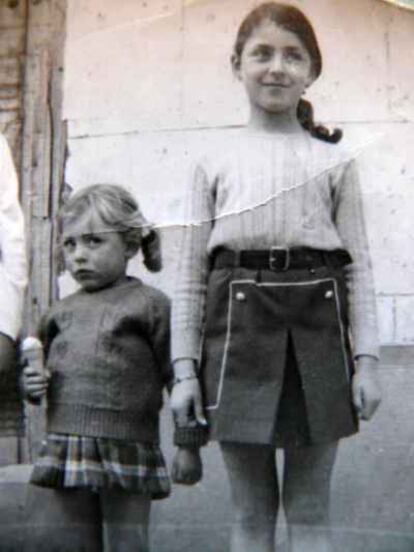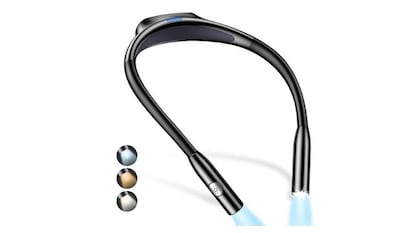There was no burial in the garden
Two sisters solve the mystery of their twin siblings, said to have died after birth
Encarna and Helena García are two sisters from Valladolid whose detective work emulates that of Sherlock Holmes, Hercules Poirot and Miss Marple. But the difference is that their investigation is not a figment of anyone's imagination: with lots of patience, they have discovered that two twin sisters of theirs, born in 1959, were secretly taken from the Provincial Maternity Ward of León.
The Garcías have even been able to determine the identities of the people who, either accidentally or purposely, participated in the kidnapping. A file that goes everywhere they go contains all the information and even photographs of everyone involved in the case, which appears to be another in the growing annals charting a nationwide business of stealing babies during the Franco era and even during the early years of democracy.
The sisters' story begins 52 years ago, on August 5, when their mother Irenea García, who was seven-and-a-half months pregnant, was admitted into the ward. A few hours later, she gave birth to twin girls. But the doctor took them to the incubator. A couple of days later, this physician went away on summer vacation and was replaced with another doctor, who decided to take the babies out of the incubator.
The next day, he informed Irenea that the first child had died. A day later, more bad news: the second baby had also passed away. Irenea never saw the bodies, and when she asked about them she was told that "they were buried in the garden." Irenea never talked about the subject again.
In December 2009, Helena kept reading about the cases of stolen babies in Spain during the postwar years and up until the early 1980s, and she started to ask herself some questions. She talked to Encarna and they both decided to investigate without getting their hopes up. The first thing that caught their attention is that, despite having lived for over 24 hours, the twins were not registered in the libro de familia, a document issue to every married couple and containing statistical data about the spouses and offspring. They then went to the Civil Registry and asked for the birth certificates. There were none.
After that, the Garcías traveled to the Provincial Archives of León, where they found abortion documents issued when a newborn dies before 24 hours are out. They discovered that the same anesthetist had signed 60 percent of the abortions that took place in 1959, and they found their siblings' papers. According to these, the first child was born on August 5 and died the same day, while the second child was born on August 8 and also died the same day. "It's the first case in the world in which twins are born three days apart," jokes Encarna.
Even later they found out that the signature of one of the doctors who attested to the deaths had been forged.
But since, in theory at least, the children were dead, the García sisters went to the cemetery, where current managers found the twins' "burial licenses." Apparently they had been interred in a mass grave with "hundreds of children." Curiously enough, these documents looked different from those of other buried babies: there were significant differences in the headings, type of paper and so on.
Helena and Encarna's parents had always told them that the twins had been baptized in extremis, according to hospital workers, before their supposed "burial in the garden." So the sisters looked for this piece of paper as well. That is when they hit the jackpot. The baptismal records were kept at the Church of San Isidro Labrador, where a nun named Sor Presentación de la Niña María baptized the twins herself in a kind of emergency service, according to which any Christian believer, faced with the imminent death of a person and no priest at hand, does the baptizing him or herself. Later, a man of the cloth makes it official in the baptism record.
And that is what the nun did, after which she went to see the priest at San Isidro, who wrote down the following: "Two girls born on August 5 (at 9am and 9.15am)..."
Encarna and Helena have discovered that most of the babies who died in August 1959 did so for the same reasons (anoxia, which is lack of oxygen in the cells, premature birth and weakness) and under the same doctor's supervision. They have submitted all their information to the attorney, who has started investigating. Meanwhile, the Garcías have already found out the name of the midwife who helped with most of those deliveries. She is alive but over 80 years old, and the sisters are wondering if it is even worth going to talk to her. "What would you do?" they ask.

Tu suscripción se está usando en otro dispositivo
¿Quieres añadir otro usuario a tu suscripción?
Si continúas leyendo en este dispositivo, no se podrá leer en el otro.
FlechaTu suscripción se está usando en otro dispositivo y solo puedes acceder a EL PAÍS desde un dispositivo a la vez.
Si quieres compartir tu cuenta, cambia tu suscripción a la modalidad Premium, así podrás añadir otro usuario. Cada uno accederá con su propia cuenta de email, lo que os permitirá personalizar vuestra experiencia en EL PAÍS.
¿Tienes una suscripción de empresa? Accede aquí para contratar más cuentas.
En el caso de no saber quién está usando tu cuenta, te recomendamos cambiar tu contraseña aquí.
Si decides continuar compartiendo tu cuenta, este mensaje se mostrará en tu dispositivo y en el de la otra persona que está usando tu cuenta de forma indefinida, afectando a tu experiencia de lectura. Puedes consultar aquí los términos y condiciones de la suscripción digital.
Últimas noticias
Lo más visto
- Europa entra en estado de alerta ante la embestida estratégica de Trump
- ¿Qué pasa si uno solo de los ganadores del Gordo de Villamanín decide denunciar?
- Los grandes derrotados del Gordo de Navidad de Villamanín, 15 jóvenes de entre 18 y 25 años: “Hoy hemos perdido amigos”
- El giro del PP con Vox: de prometer no gobernar con la extrema derecha a normalizarlo tras el resultado en Extremadura
- La larga sombra del hijo único: China paga con una crisis demográfica su mayor experimento social




























































